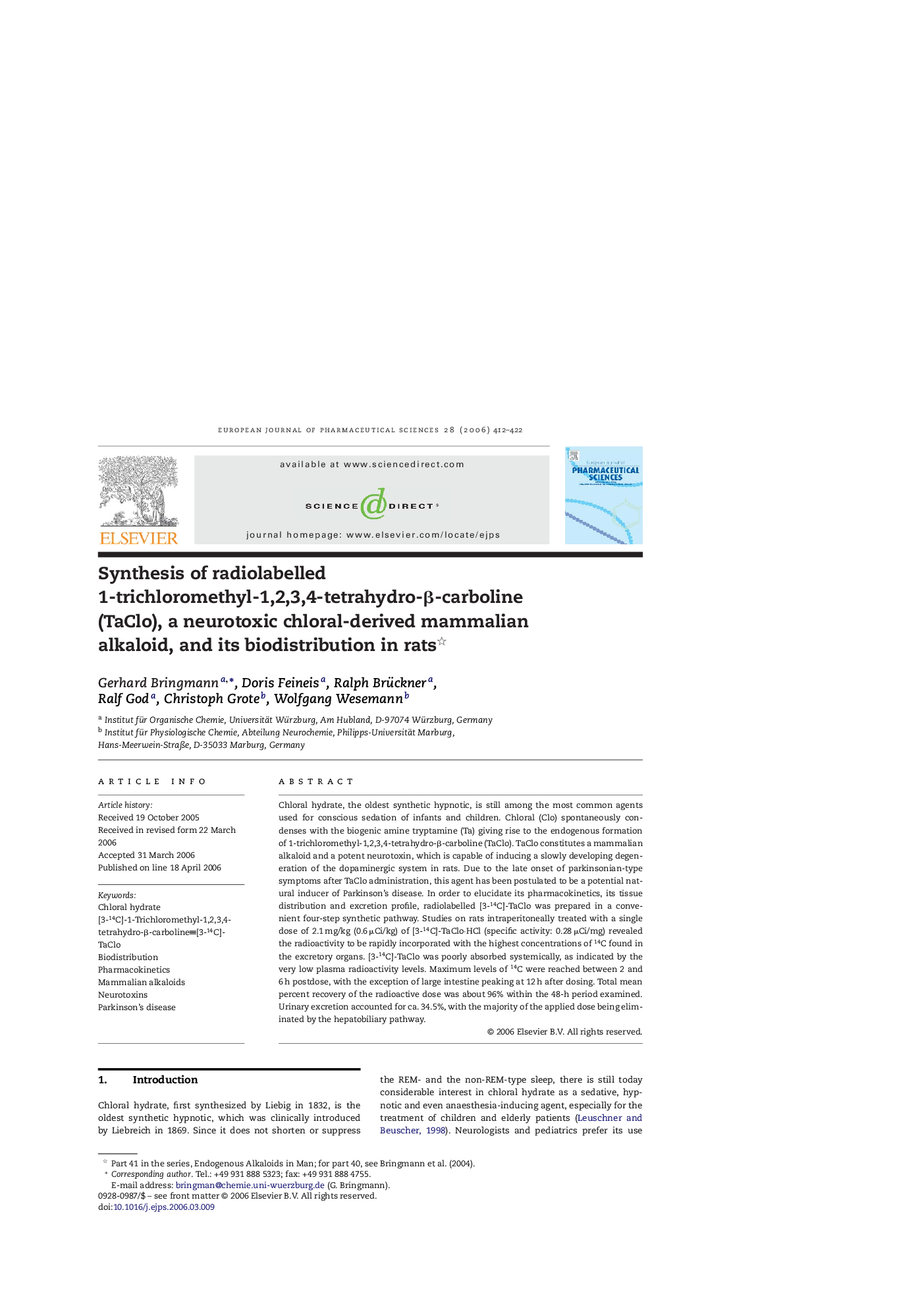| کد مقاله | کد نشریه | سال انتشار | مقاله انگلیسی | نسخه تمام متن |
|---|---|---|---|---|
| 2482711 | 1556293 | 2006 | 11 صفحه PDF | دانلود رایگان |

Chloral hydrate, the oldest synthetic hypnotic, is still among the most common agents used for conscious sedation of infants and children. Chloral (Clo) spontaneously condenses with the biogenic amine tryptamine (Ta) giving rise to the endogenous formation of 1-trichloromethyl-1,2,3,4-tetrahydro-β-carboline (TaClo). TaClo constitutes a mammalian alkaloid and a potent neurotoxin, which is capable of inducing a slowly developing degeneration of the dopaminergic system in rats. Due to the late onset of parkinsonian-type symptoms after TaClo administration, this agent has been postulated to be a potential natural inducer of Parkinson's disease. In order to elucidate its pharmacokinetics, its tissue distribution and excretion profile, radiolabelled [3-14C]-TaClo was prepared in a convenient four-step synthetic pathway. Studies on rats intraperitoneally treated with a single dose of 2.1 mg/kg (0.6 μCi/kg) of [3-14C]-TaClo·HCl (specific activity: 0.28 μCi/mg) revealed the radioactivity to be rapidly incorporated with the highest concentrations of 14C found in the excretory organs. [3-14C]-TaClo was poorly absorbed systemically, as indicated by the very low plasma radioactivity levels. Maximum levels of 14C were reached between 2 and 6 h postdose, with the exception of large intestine peaking at 12 h after dosing. Total mean percent recovery of the radioactive dose was about 96% within the 48-h period examined. Urinary excretion accounted for ca. 34.5%, with the majority of the applied dose being eliminated by the hepatobiliary pathway.
Journal: European Journal of Pharmaceutical Sciences - Volume 28, Issue 5, August 2006, Pages 412–422